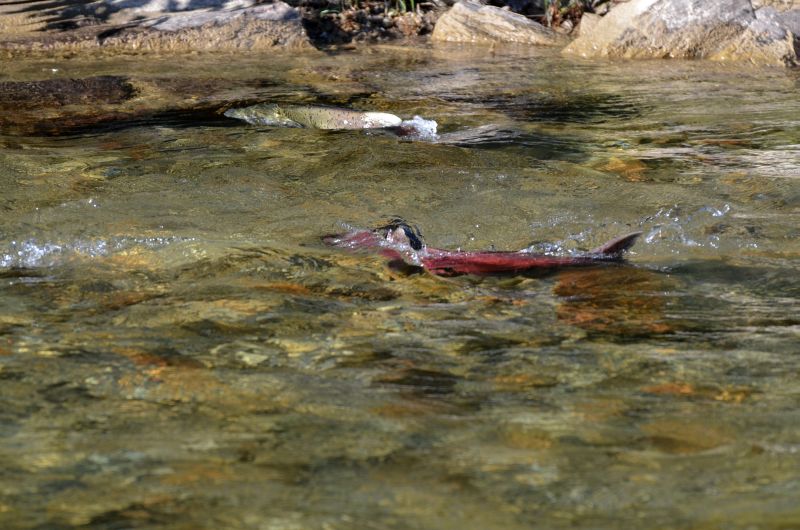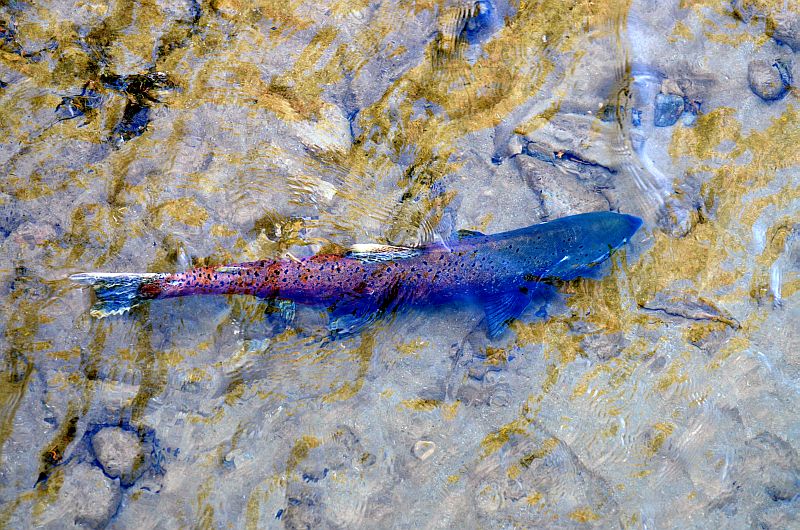| All salmon spawn in fresh water, usually in streams. Many salmon, especially Pacific salmon spend their adult lives in the ocean, returning to their native streams to spawn. Unlike other salmonids, Pacific salmon die after spawning. They are famous for their ability to home precisely to their place of birth to spawn. In Valamount there are the Chinook (KIng) salmon that can de spotted. |
Every year adult salmon enter the rivers for spawning. At this time millions of salmon return to their native streams to spawn. The annual salmon run is an incredible natural spectacle that is unparalleled. The Chinook salmon, which is the biggest of all,reaching up to 150 cm, must first travel a distance of 1300 km from the Pacific Ocean to spawn at Rearguard Falls. the upper limit of their migration. This incredible journey takes them 10 weeks, and only 15% of them arrive here, they others die en route. Back at their precise place of birth, they spawn and die afterwords, a bitter-sweet ending to such a heroic journey. The new salmons start their life in gravel beds, As salmon fry, only 2,5 cm long, they spend a year in fresh water streams, before maturing into smolts, then they migrate to the Pacific Ocean. Here they spend 4-5 years feeding and maturing, until nature calls them home.
This year is not a good one, the waters are too cold, and the eggs are not ripe yet. Last week a count in Swift Creek, near Valemount came up to 23 salmon only, much less than the 200 fish from other years.

Chinook spotted at Swift Creek

Taking a rest before the last 30 km

The last hurdle: The Rearguard Falls